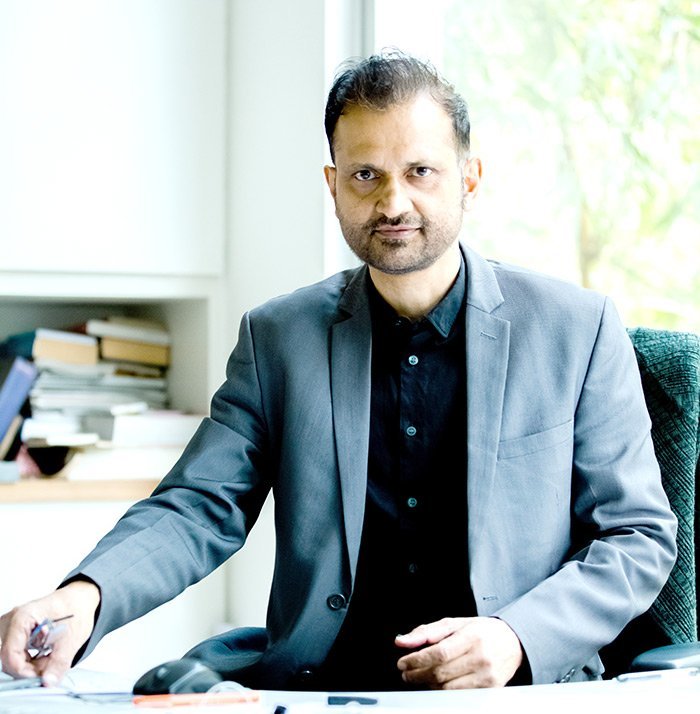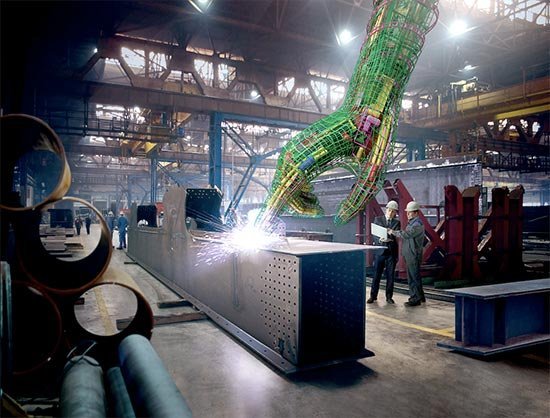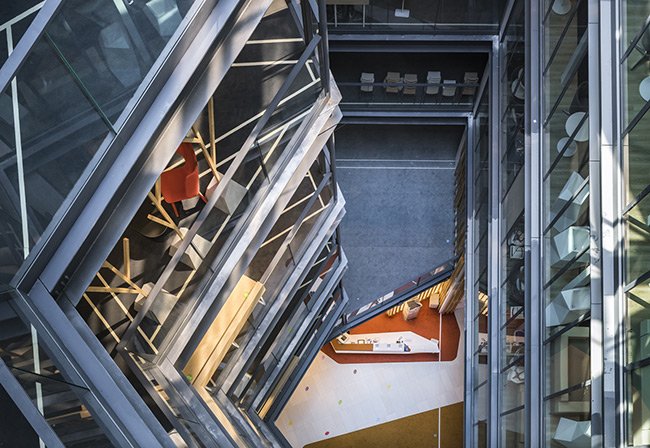By staying one step ahead in the ever-changing industry which is clearly reflected in their designs has helped them create a strong foothold for them in the industry. The uniqueness in their works and their desire to keep updating and learning makes RSP among the best of the architecture firms in the country.
Architecture is not plainly about leaving your mark but must address the need of the hour and service its user, says, Ar. Anshu Mahajan, Director, RSP India who is here with us….
Read on to know more…
How has been your journey from your first venture as an Architect to now?
My journey as an architect started off at the office of Raj Rewal between 1984 to 1994. From being a part of the team designing parliament library at RRA to straddling multiple sectors and scales at RSP, my journey has been nothing short of a rollercoaster ride. The Parliament Library was an important project for India – especially since it came at a time when the country was rapidly developing its industrial and information-technology sectors. Not only does the library furnish vital research and meeting capabilities for the government, but its architecture attempts to establish an Indian identity within the once British imperial capital.
Thereon moving to RSP’s India Operations in 2002 allowed me to venture into a world of IT Parks and Campuses. Since, then we have shaped and changed the urban built landscape of the country through our provocative ideas in executing wide range of architectural projects like Commercial offices, Residential townships, Institutions, Retail facilities and Hospitality projects. Some of the landmark projects include International Tech Park in Bangalore, Cisco Campus in Bangalore, Prestige Shantiniketan, Forum malls, The Oberoi in Gurgaon, among others.
Architecture is not plainly about leaving your mark but must address the need of the hour and service its user.
With wide variety of experience in high rise structures, what is your take on high rise buildings in India?
Indian cities are witnessing immense demographic expansion. Around 10 per cent of our population lives in only six cities, namely, Delhi, Mumbai, Kolkata, Bengaluru, Hyderabad, and Chennai, with the density of population exceeding 1,000 persons per square meter.
Therefore, high-rise buildings play an increasingly important role in contemporary architecture, offsetting the ever-increasing land costs, thus, maximizing the Floor Space Index (FSI) on a given piece of land.
This growing necessity for high-rise structures has further led to development of innovative technologies and methods to achieve a safer and aesthetically pleasing design at a much faster rate. Use of high tensile concrete, precast structures, use of steel in construction, facades and lighter materials have made high rise construction increasingly more viable.
What all aspects do you consider while designing any project?
The process of designing is a thorough and systematic evaluation of values, goals, facts, and client requirements. Every design must fulfil a variety of requirements of both form and function which may feel restrictive in the immediate sense. A well-conceived design program leads to high-quality design. Factors to consider are –
• Physical requirements
• User Experience
• Time and Money
• Context/Setting
• Upkeep
What is your signature style while designing a project? What makes your design style different from other contemporaries?
We do not believe in single-size-fits-all ideology. Our projects and clients are diverse, we design to fit our users’ needs best. Designing, to us, is thus outcome oriented and If our design makes an office more productive or a home more liveable, we consider it a success.
Can you please mention steel related projects designed by you?
To name a few are Flipkart Campus, Bangalore, Equinox Centraus and Aquila.
How have technological advancements influenced your work?
Architecture and technology have always intersected at a precarious crossroads. Architecture and design are applied sciences that utilize research and development in technology to propel their work to new heights, presenting buildings and products that are not only more interesting, but more responsible and useful as well.
Designers are making use of advancements in 3D printing and rapid prototyping to not only build better, more accurate design models, but to build full scale representations of their work. VR, AR and Mixed Reality on the other hand allows the interaction between physical spaces and virtual spaces. There is a need to adapt and get adhered to the upcoming technologies in the best way to thrive in a challenging future.
What is your ultimate goal when it comes to your work? What do you want to be remembered for?
The projects we take on are diverse; what ties them together and what usually attracts us is complexity and challenge. We, as an organization, have ventured into different scales and typologies, and to date, we continue to innovate and learn.
















